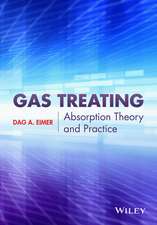Structural Plasticity: Theory, Problems, and CAE Software
Autor W. F. Chen, H. Zhangen Limba Engleză Paperback – 7 oct 2011
Preț: 469.41 lei
Preț vechi: 552.25 lei
-15% Nou
Puncte Express: 704
Preț estimativ în valută:
89.83€ • 93.44$ • 74.16£
89.83€ • 93.44$ • 74.16£
Carte tipărită la comandă
Livrare economică 14-28 aprilie
Preluare comenzi: 021 569.72.76
Specificații
ISBN-13: 9781461277460
ISBN-10: 1461277469
Pagini: 264
Ilustrații: X, 250 p.
Dimensiuni: 155 x 235 x 14 mm
Greutate: 0.37 kg
Ediția:Softcover reprint of the original 1st ed. 1991
Editura: Springer
Colecția Springer
Locul publicării:New York, NY, United States
ISBN-10: 1461277469
Pagini: 264
Ilustrații: X, 250 p.
Dimensiuni: 155 x 235 x 14 mm
Greutate: 0.37 kg
Ediția:Softcover reprint of the original 1st ed. 1991
Editura: Springer
Colecția Springer
Locul publicării:New York, NY, United States
Public țintă
ResearchDescriere
This book is designed for use as a supplement to the textbook "Plasticity for Structural Engineers" by W.F. Chen and D.J. Han (Springer-Verlag, 1988) or other plasticity texts. The purpose is to help students and structural engineers learn and practice how to solve typical engineering plasticity problems in general and, more importantly, how to use computers to solve plasticity problems in structural engineering in particular. To this end, specific numerical algorithms in the computer software implementation of the theory together with actual code development are given. A number of solved and supplementary problems are provided, as well as two computer-aided-education (CAE) programs, to enhance the students' understanding of these subjects.
Cuprins
1 One-Dimensional Stress-Strain Analysis.- 1.1 Uniaxial Behaviors.- 1.2 Basic Relations.- 1.3 Idealized Stress-Strain Relationships.- 1.4 Hardening Rules.- 1.5 Stress-Strain Response Problems.- 1.6 Fixed-End Bar Problems.- 1.7 Stepped and Tapped Bar Problems.- 1.8 Three-Bar Structure Problems.- 1.9 Three-Bar Truss Problems.- 2 One-Dimensional Stress-Strain Analysis Software.- 2.1 Formulation of PLASTIC1.- 2.2 Algorithms.- 2.3 Implementation of PLASTIC1.- 2.4 User’s Manual of PLASTICI.- 2.5 Problems Associated with Hardening Parameters.- 2.6 Problems Associated with Hardening Rules.- 2.7 Source Code Listing of PLASTIC1.- 3 Elastic Stress and Strain Analysis.- 3.1 Stress Tensor.- 3.2 Principal Stresses and Stress Invariants.- 3.3 Deviatoric Stress Tensor and Its Invariants.- 3.4 Geometric Representation of Stress States.- 3.5 Equilibrium Equations.- 3.6 Strain Tensor.- 3.7 Principal Strains and Strain Invariants.- 3.8 Deviatoric Strain Tensor and Its Invariants.- 3.9 Compatibility Equations.- 3.10 Generalized Hooke’s Law.- 3.11 Decomposition of Stress-Strain Relations.- 3.12 Basic Equations in Cylindrical and Spherical Coordinates.- 4 Yield Criteria.- 4.1 Representation of Yield Criteria.- 4.2 Hydrostatic-Pressure-Independent Materials.- 4.3 Hydrostatic-Pressure-Dependent Materials.- 4.4 Tresca and von Mises Problems.- 4.5 Mohr-Coulomb Problems.- 4.6 Drucker-Prager Problems.- 4.7 Tension Cut-Off Problems.- 5 Perfectly Plastic Stress Analysis.- 5.1 General Aspects.- 5.2 Loading Criterion.- 5.3 Plastic Potential and Flow Rule.- 5.4 Complete Perfectly Plastic Constitutive Relation.- 5.5 Thin-walled Vessel Problems.- 5.6 Plastic Zone Near Crack Tip Problems.- 5.7 Thick-walled Vessel Problems.- 5.8 Incremental Stress-Strain Relation Problems.- 5.9 Source Code Listing of PLASTIC_ZONE.- 6 Hardening Plastic Stress Analysis.- 6.1 Introduction.- 6.2 Deformational Theory.- 6.3 Loading Surfaces and Loading Criteria.- 6.4 Flow Rules.- 6.5 Hardening Rules.- 6.6 Effective Stress and Effective Plastic Strain.- 6.7 Incremental Stress-Strain Relationships.- 6.8 Problems Using Incremental Theory.- 6.9 Problems Using Deformational Theory.












